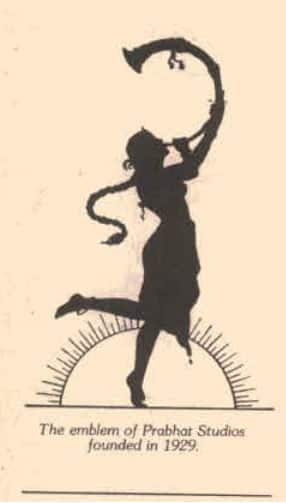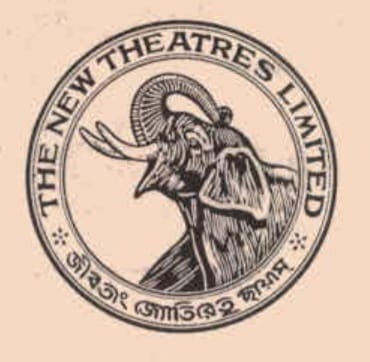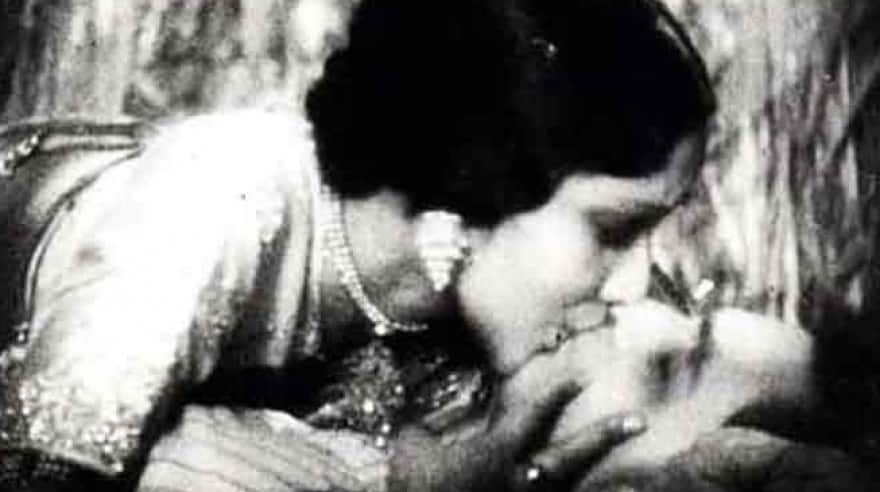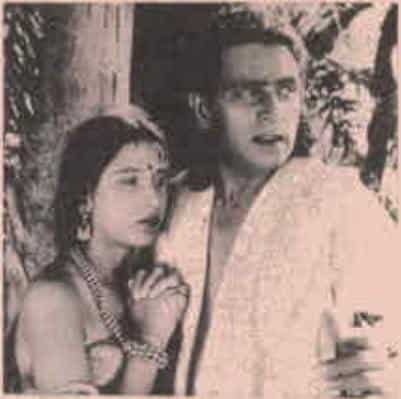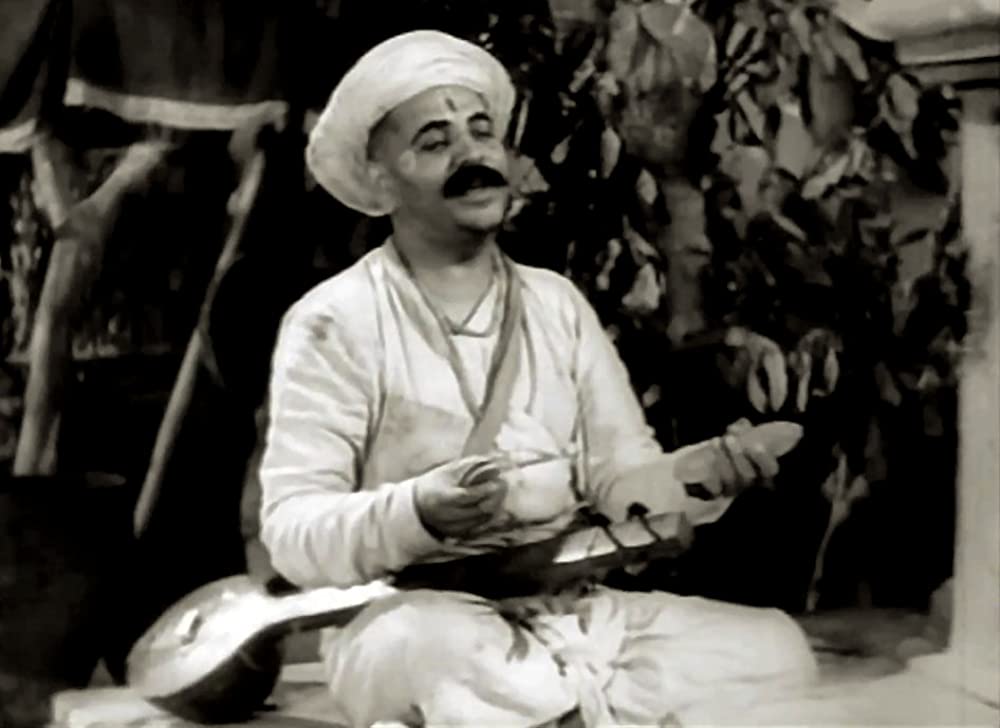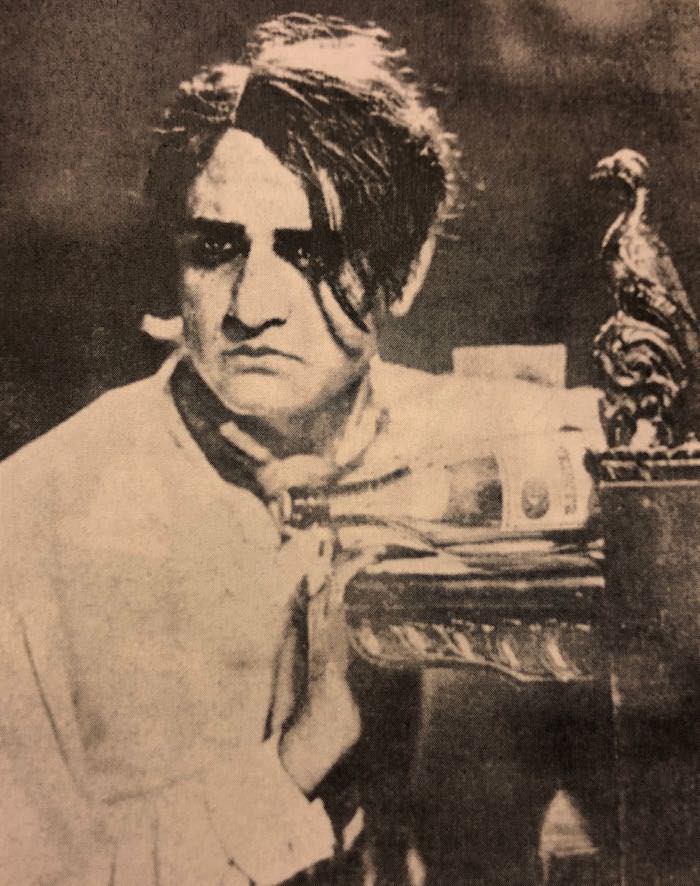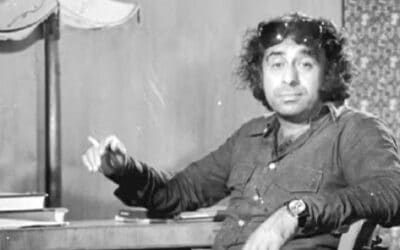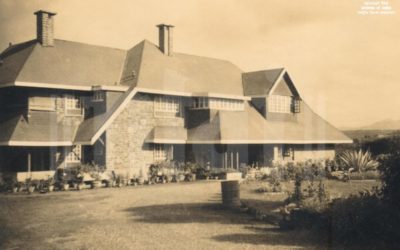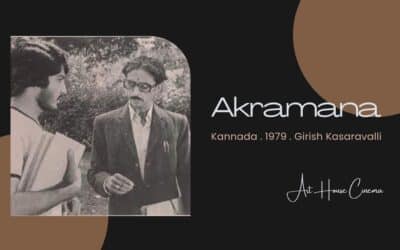This article is an archival reproduction of an article originally written by Sanjit Narwekar and published in the Indian Panorama Catalogue of 1980. Some of the images have been taken from the original article.
The years 1979/80 mark two important milestones in the history of Indian Cinema. It is during these years that the Indian film industry celebrates the fiftieth anniversaries of the Prabhat Film Company and the New Theatres. Three years later, in 1983, Bombay Talkies has its fiftieth anniversary. Though none of the three production companies exists today, their films are constant reminders of the Golden Age of Indian Cinema.
Fifty years ago in 1929, four youngsters, dissatisfied with the short-sighted policy adopted by their tradition-bound company – Baburao Painter’s Maharashtra Film Company – broke away and formed the Prabhat Film Company in Kolhapur. The four youngsters were V. Shantaram, S. Fatehlal, V.G. Damle and K.R. Dhauber. With their financing partner, the well-known industrialist S.B. Kulkarni who put up the considerable capital of Rs. 3,000, they launched their first silent film – Gopal Krishna. By 1933, they were established enough to buy a sprawling estate on the outskirts of Pune and launch a regular studio with as many as four stages and a number of outdoor locales.
Almost simultaneously in 1930 in Calcutta, B.N. Sircar launched New Theatres. The son of the then Advocate General of Bengal, Sircar had returned from Glasgow with an engineering degree and with the intention of pursuing a career in construction. One of his first assignments was to construct a cinema house, and Sircar was bitten by the film bug. After producing two inconsequential silent films – Chorekanta and Chasar Maye – he built and equipped a first-class studio and laboratory and formally launched New Theatres with Muhabbat Ke Aansoo, starring Akhtari and a new find – Saigal Kashmiri – later to become famous as India’s greatest singing star, K.L. Saigal.
While the Prabhat Film Company was being shifted from Kolhapur to Pune in 1933, yet another film company was being established in Malad, on the outskirts of Bombay. Its founders were the husband-wife team of Himanshu Rai and Devika Rani, who had returned to their native land after a resounding success in the West. Their co-production with Munich’s Emelka Film Company – Light of Asia, Throw of Dices and Karma – had been the first films to take India’s philosophy to the West. In India, they set up the third big production concern, Bombay Talkies.
Thus by 1933, when the Indian film industry was gradually shifting over to sound, three big film producing concerns were established and consolidated, three film companies which would dominate Indian film making till the mid-forties.
The switchover to sound proved to be extremely expensive for a number of minor production companies which had to close down their schedules. Only those companies which could afford the larger investments were able to cope with the switchover. Hence the smaller producers made way for the more stable and prosperous studio system. For nearly a decade and a half, the studio was the superstar, and the actors, technicians, directors mere salaried employees.
In spite of volatile temperaments, fragile egos, and artistic moods, the studio system was for a whole fifteen years the only way to make films in India. The reasons for this are not hard to find. In spite of differing attitudes, the entire studio staff worked as one family, sharing work and responsibilities. In return, the studio provided them with much-needed security in a highly unpredictable profession. Because the stars and technicians were on the regular staff, films could be made with greater sincerity and at a stretch. Studio bosses, most of them culturally conscious intellectuals and truly in love with the film medium, were prepared to back a couple of experimental prestige productions.
Even the so-called entertainers were made with care and genuine love. Over and above all this, the central idea was to make good films and not enormous profits.
Consequently, these studios attracted the best talent available in the country. If Bombay Talkies could boast of stars like Ashok Kumar, Devika Rani, and Leela Chitnis, Prabhat had Shanta Apte, Durga Khote, Keshavrao, and Gajanan Jagirdar, and the New Theatres had K.L. Saigal, Pankaj Mullick, K.C. Det, and Kanan Devi. If Bombay Talkies had directors like Himanshu Rai and Franz Osten, Prabhat could claim V. Shantaram, K. Narayan Kale, Damle and Fatehlal, and New Theatres had the trinity of P.C. Barua, Debki Bose, and Nitin Bose. Indian filmgoers went to see a Prabhat film or a Bombay Talkies film or a New Theatres film. Who had directed the film or acted in it was of peripheral interest to them.
The fame of the three studios was not restricted to India alone. If Himanshu Rai has impressed Europe with his three co-productions, the other two companies had their own successes: New Theatres’ Seeta was shown at the Venice Film Festival in 1934, and Prabhat’s Sant Tukaram won an award at the same festival in 1937.
Devika Rani and Himanshu Rai in Bombay Talkies’ Karma (1933), an Anglo-Indian co-production, made in English and very well received in London. Himanshu Rai and his wife Devika Rani returned with a print of Karma from England to found Bombay Talkies later in 1933.
Prabhat, New Theatres, and Bombay Talkies were not the only successful companies of the Thirties. There were other well-known names but their products rarely reached the sophistication of the Big Three. They were Ardeshir Irani’s Imperial Film Company, which was to produce the first Indian talkie Alam Ara; Chimanlal Desai’s Sagar Movietone; J.B.H. and Homi Wadia’s Wadia Movietone, which specialized in stunt and mythological films (incidentally, the Wadia Brothers are still active filmmakers); Sohrab Modi’s Minerva Movietone which specialized in historicals; Chandulal Shah and Gohrabai’s Ranjit Movietone which put out Hollywood-inspired socials. In the South, the Madras United Artistes Corporation, Modern Theatres Ltd., and Vauhini Pictures were some of the more prominent production companies that concentrated on South Indian films.
Himanshu Rai and Seetha in the historic silent film The Light of Asia (1925), based on the life of Buddha. An Indo-German co-production, it was the first Indian film released abroad. After its London premiere in 1926, the film enjoyed a royal command performance.
Prabhat Studio’s Sant Tukaram (1948), one of Prabhat’s extremely successful devotional films. Even today the film attracts full houses, drawn by its mixture of religious fervor and social realism.
All this was too good to last. By the early forties, most studios began to show signs of disintegrating. The stars began to realize their crowd-pulling capacity and to recognize the value of independence from the strict discipline of the studio system. Prithviraj Kapoor had already shown the way by making a great success of freelancing. Following the example of their stars, the leading directors began to break away. Shantaram left Prabhat in 1941 to start his own enterprise, the Rajkamal Kalamandir film complex. Sagar’s star director Mehboob Khan left to work under his own banner.
K.L. Saigal, shown here in New Theatres’ Devdas (1935), went on to become one of Ranjit Movietone’s most popular singing stars. Ranjit managed to produce over one hundred talkies between 1931 and 1946.
As freelancing gained a foothold in the film industry, production schedules began to slow down. Even the bigger studios could no longer maintain a full-time staff, which spent half of its productive time waiting for the stars or the director to arrive. The end came with the country’s Independence in 1947, and the heavy losses suffered during the Partition. The industry was infiltrated with large swarms of proposal makers. They were not really film producers but merely saw in the industry an opportunity to make quick money. These proposal makers, without finances, without studios, and without background or love of cinema, slowly edged out the established companies from the market. The latter could not adjust to the new situation of undercutting, over-bidding, and mollycoddling of stars.
By the late forties, the studio system was completely wiped out – replaced by the independent producer who relied on rented studios and freelance talent. It is interesting to note that the independent producer also surfaced in Hollywood whose impregnable studio system, one thought would never collapse. So while we celebrate the anniversaries of various institutions, let us keep in mind that as long as the independent producer emulates the finer points and the discipline of the studio system, the Indian film industry has nothing to fear and will progress.
– Sanjit Narwekar


